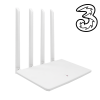Are you wondering how to switch broadband provider without any hassle? Switching broadband providers can seem challenging at first. With the right steps, it’s quite manageable.
In today’s fast-paced world, a reliable internet connection is essential. Yet, many people stick with their current provider due to the perceived hassle of switching. This reluctance can lead to higher bills and slower internet speeds. Understanding how to switch broadband providers can save you money and improve your online experience.
This guide will walk you through the process, making it simple and stress-free. You’ll learn how to compare options, handle the switch, and ensure a smooth transition. Stay tuned to discover how you can find a better deal and enjoy faster internet without the headache.
Choosing The Right Broadband Provider
Switching broadband providers can be tricky. The right provider makes a big difference in your internet experience. Let’s dive into how to choose the right broadband provider.
Comparing Plans
First, look at different plans. Broadband providers offer many options. Some plans are better for streaming, others for gaming. Here are some key points to compare:
- Speed: Check the download and upload speeds.
- Data Limits: Some plans have limits, others are unlimited.
- Cost: Look at the monthly fee and any extra charges.
- Contract: Notice the length and terms of the contract.
Checking Coverage
Coverage is crucial. A great plan is useless if the service is poor in your area. Check the provider’s coverage map. Verify the availability in your neighborhood. Here’s how to check:
- Visit the provider’s website.
- Find their coverage map or availability tool.
- Enter your address to check the service.
For rural areas, coverage can be spotty. Always double-check. Ask neighbors about their experience. This will give you a better idea of the service quality.
Preparing For The Switch
Switching broadband providers can save you money and improve your internet service. Proper preparation is essential to make the switch smooth and hassle-free. Follow these steps to prepare yourself for the transition.
Gathering Information
First, gather all the necessary information about your current broadband service. Note down your current plan details, including speed, monthly cost, and contract end date. Also, check if there are any termination fees.
Next, research new broadband providers in your area. Compare their plans, speeds, and prices. Make a list of potential providers and their contact information. This will help you make an informed decision.
Notifying Current Provider
Contact your current broadband provider to inform them about your decision to switch. Ask them about the cancellation process and any fees you might incur. Knowing this information will help you avoid unexpected charges.
Also, ask for the exact date when your service will end. This ensures there is no overlap or downtime during the switch. Make sure to write down all details provided by your current provider.
Confirm any equipment return procedures. Some providers require you to return their modem or router. Knowing these steps in advance ensures you are not charged for unreturned equipment.
Setting Up New Service
Switching broadband providers involves checking your current contract, comparing new offers, and contacting the new provider. Ensure a smooth transition by scheduling the switch and notifying your current provider.
Switching to a new broadband provider can feel like a big task. But with the right steps, it becomes simple. One major step is setting up your new service. This involves scheduling the installation and configuring your equipment. Let’s break it down.
Scheduling Installation
First, call your new provider to schedule an installation date. Choose a time when you will be home. This helps if the technician needs to enter your home. Some providers offer self-installation kits. They send you the tools, and you do it yourself. But if you are not tech-savvy, a technician can help. Make sure your current service ends after the new one starts. This prevents any gaps in your internet access. It’s also wise to ask about any fees. Some providers charge for installation. Knowing this helps you plan your budget.
Configuring Equipment
After installation, it’s time to set up your new equipment. This includes your modem and router. Some providers give you their own equipment. Others allow you to use your own. First, plug in your modem. Connect it to a power source and your phone line or cable outlet. Wait for the lights to stabilize. Next, connect your router to the modem. Use an Ethernet cable for this connection. Now, turn on the router. Wait for the lights to stop blinking. This means it’s ready. Find the network name and password on your router. Use these to connect your devices to the new network. Test your connection by browsing the web. If you face issues, contact your provider’s customer service. They can guide you through troubleshooting steps. Setting up your new broadband service can be smooth and easy. Just follow these steps, and you’ll be online in no time. “`
Post-switch Tasks
Switching broadband providers is a great way to get better service. But, the process doesn’t end when you connect to your new provider. There are several important steps to take after switching. These tasks ensure you get the most out of your new broadband service.
Testing Connection
Once your new broadband is set up, test the connection. Make sure it meets the promised speed. Use online speed test tools to check the download and upload speeds. Compare these results with your new provider’s advertised speeds. If there is a big difference, contact customer support for help.
Check the stability of your connection. Watch videos, browse websites, and use different devices. This helps you see if the connection is consistent. It’s important to do this in the first few days. Early issues can often be fixed quickly by your provider.
Cancelling Old Service
After you’ve confirmed your new connection works well, cancel your old service. Contact your previous provider and inform them you’ve switched. Make sure to check if there are any cancellation fees. Some contracts have early termination fees.
Return any equipment like routers or modems to your old provider. They might charge you for unreturned items. Save all records of your cancellation. This includes emails, receipts, and any other communications. Keeping records helps avoid disputes later.
FAQ about How to Switch Broadband Provider
How Do I Find The Best Broadband Provider?
Compare providers online. Look for speed, price, and customer reviews. Check coverage in your area. You can choose Silux Mobile as your broadband provider.
What Documents Do I Need To Switch Broadband Provider?
Typically, you’ll need your current broadband account details. Also, have your new provider’s information ready.
How Long Does It Take To Switch Broadband Providers?
Switching usually takes 1-2 weeks. It can vary based on providers. Plan ahead to avoid downtime.
Will I Experience Downtime When Switching Broadband?
Some downtime might occur. Most providers aim to minimize this. Check with your new provider for details.
Conclusion about How to Switch Broadband Provider?
Switching broadband providers doesn’t have to be complicated. Start by researching options. Compare speeds, prices, and customer reviews. Contact the new provider to set up your service. Notify your current provider about the change. Ensure a smooth transition by scheduling the switch on a convenient date.
Finally, check everything works perfectly after the switch. Save money and enjoy better service with the right broadband provider. Happy surfing!






